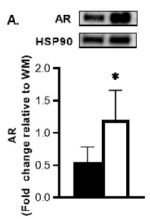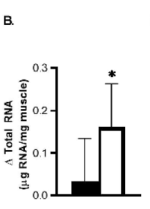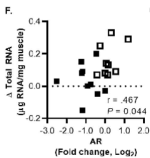I was requested by PM to address the claim that androgen receptor (
AR) "resensitization" is a rationale for discontinuing AAS, meaning that supraphysiologic androgen
dose (AUC; nmol * h/L) induces
tachyphylaxis (desensitization) analogous to opioid/opiate & Opioid Receptors (i.e., κ-, δ-, μ- OR) or clenbuterol & β₂Adrenergic Receptors (
B2AR). Since I have some time and think that this is important, I will oblige.
Tachyphylaxis or desensitization is a feature of G-protein-coupled receptors (
GPCRs) that AR is
not. In the case of opioid/opiate drugs, the μ- OR is a GPCR subject to phosphorylation that recruits β-arrestin, an accessory protein that induces tachyphylaxis, requiring increasing doses to elicit the same efficacy in subsequent doses. Clenbuterol activates the B2AR, a GPCR, thereby stimulating phosphorylation of downstream elements, binding β-arrestin, to regulate signaling pathways involved in muscle growth and decreased fat mass (recomp), as well as increased strength, sprint, power (performance). In the cases of both of these types of drugs, opioids/opiates & B2ARs like clenbuterol, the dose must be increased with subsequent uses in order to elicit comparable effects due to tachyphylaxis.
AR Regulation
AR, by contrast, is not a GPCR, and so is not associated with tachyphylaxis.
AR expression (the number/# of receptor proteins in our bodies) is regulated in several ways:
Broadly speaking, there are four (4) forms of regulation that control the number of receptors in the body. These are:
1. Transcription rate (i.e., up-regulate AR by increased transcriptional AR mRNA synthesis)
2. Translational efficiency (i.e., up-regulate AR by increased AR mRNA synthesis per ribosome)
3. Translational capacity (i.e., up-regulate AR by increased AR mRNA synthesis as a result of increased ribosomal biogenesis [↑ ribosome #])
4. Receptor turnover (i.e., up-regulate AR by decreased degradation/synthesis balance of AR mRNA)
To understand them, let’s quickly review the life-cycle of an individual AR.
? Transcription rate
There is a single gene in the DNA of each cell that codes for the AR. In the transcription process, the DNA code is copied to mRNA. The rate (frequency) of this process can be either increased (promoted) or decreased (repressed) depending on what other proteins are bound to the DNA at the time. Increase or decrease of this rate can be a form of regulation: the more AR mRNA is produced, all else being equal, the more ARs there will be.
Bill Roberts.
✖ Translational efficiency
If efficiency is 100%, each mRNA will be used by a ribosome to produce an AR, which is a protein molecule. The process of making protein from the mRNA code is called translation. In practice efficiency will not be 100%. Changes in efficiency of translation can also be a form of regulation.
Bill Roberts.
This, if it were a mechanism by which androgen regulated AR #, would be marked by mTOR activity (ie, myogenic markers, rpS6 or p70S6K increases in human skeletal muscle cells
in vivo).
✓ Translational capacity
By increasing the # of ribosomes, the absolute # of AR produced by translation will increase. This is an important mechanism by which androgens ↑AR # in vivo.
View attachment 181280
The increase to AR # reflects, in part (
r = 0.467), increased translational capacity, reflected by an increased muscle total RNA content (Δ μg RNA/mg muscle) that since ribosomal RNA comprises > 85% of cellular RNA, describes an increased ribosome # (suggesting that androgen/T stimulates ribosomal biogenesis):
View attachment 181281View attachment 181282
? Receptor turnover
The final form of potential post-translational regulation is the rate of loss of ARs. If the cell produces x ARs per hour, and their half life is say 7.5 hours, then the number of ARs will be higher than if ARs are produced at that same rate but the half life is say only 3.3 hours. Thus, control of rate of turnover, or change in half-life, can be another means of regulation.
Bill Roberts.
Conclusions
1. AR is up-regulated (AR # & density increased) by testosterone/androgen in human skeletal muscle cells
in vivo.
2. This up-regulation is known to be a result of increased translational capacity by testosterone/androgen; and not translational efficiency a la mTOR.
3. Regulation of AR is not subject to desensitization; so, by corollary, there is no rationale to support cessation for resensitization.


































.gif)














































